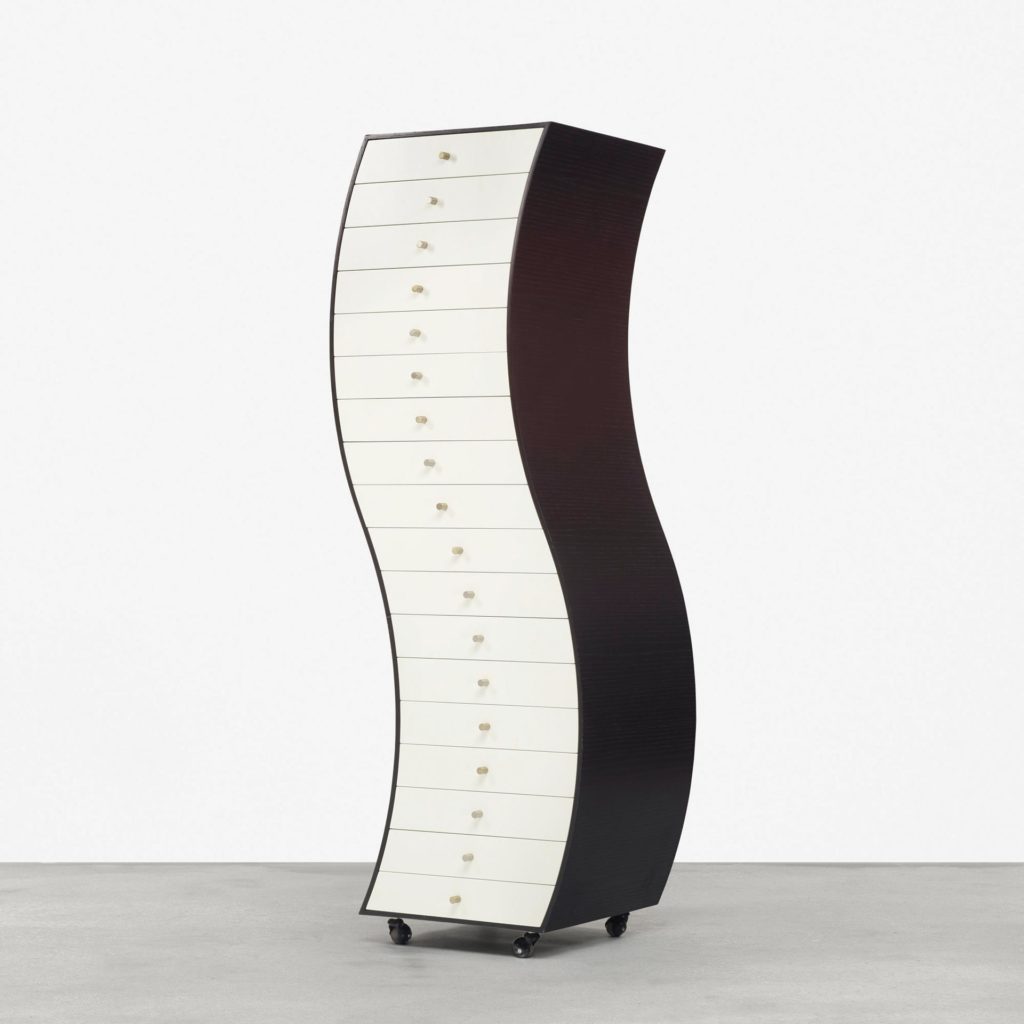Copyright © 2025 Motivate Media Group. All rights reserved.
Furniture in Irregular Forms
We are chronicling the people, places and objects that will stand the test of time.


In 1970, one of Shiro Kuramata’s most daring creations amazed the world with its unconventional form and apparently impossible lightness of form.
For two and a half decades, Shiro Kuramata created some of the most unusual and influential architectural interiors and pieces of furniture.
As head of Kuramata Design Office in Tokyo, which he founded in 1965, he found new applications for industrial materials such as wire mesh – and found fame in doing so.
He’s been credited with inventing a new design vocabulary, where pieces create a sensation of floating lines and weightlessness, of transparency and light.
His work forms part of the permanent collections of some of the world’s leading art and design museums, and his popularity and lasting influence has long been reflected in the prices that his pieces achieve at auction – such as the US$86,000 that his Miss Blanche chair fetched at a Christie’s auction back in 1990.
That was also the year that his enormous contribution to art and design was recognised by the government of France, who awarded him the prestigious Ordre des Arts et des Lettres just one year before he died.
It was back in 1970, however, that this Icon was created and wowed designers and consumers alike with its daring and utterly unconventional shape.
Furniture in Irregular Forms resulted from Kuramata’s experimentation during the 1960s and resembles a chest of drawers that’s been exposed to enough heat to make it start melting.
Two versions were produced: Side 1, with a wave-like curve from right to left and back again; and Side 2, whose sides were straight but had a front-back curve that was most obvious when viewed from the side.
Yet the bent shape does not create the impression of an object buckling under weight – rather of one that is reaching upwards, impossibly light in form.
And when Cappellini reissued Furniture in Irregular Forms in 1986, rejuvenated interest meant that a new generation could enjoy Kuramata’s immediately recognisable masterpiece. cappellini.it
The Latest
Design Take: Inside the Royal Suite at Jumeirah Al Naseem
With sweeping views of the ocean and Burj Al Arab, this two bedroom royal suite offers a lush stay.
Elevated Living
Designed by La Bottega Interiors, this penthouse at the Delano Dubai echoes soft minimalism
Quiet Luxury
Studio SuCo transforms a villa in Dubailand into a refined home
Contrasting Textures
Located in Al Barari and designed by BONE Studio, this home provides both openness and intimacy through the unique use of materials
Stillness, Form and Function
Yasmin Farahmandy of Y Design Interior has designed a home for a creative from the film industry
From Private to Public
How ELE Interior is reshaping hospitality and commercial spaces around the world – while staying unmistakably itself
A collaborative design journey
A Life By Design (ALBD) Group and Condor Developers have collaborated on some standout spaces in Dubai
New Episode: In Design With: Ahmed Bukhash
Watch the latest episode on In Design With.
Highlights of the Biennale Architettura 2025
We shine a light on the pavilions from the Arab world at the Venice Architecture Biennale, on display until Sunday 23 November 2025
Read ‘Bold Design’ – Note from the editor – July/August 2025
Read identity magazine's July/August 2025 edition on ISSUU or grab your copy at the newsstands.
Things to Covet
Elevate your spaces with a pop of colour through these unique pieces
Designing Spaces with Purpose and Passion
We interview Andrea Savage from A Life By Design – Living & Branding on creating aesthetically beautiful and deeply functional spaces
















